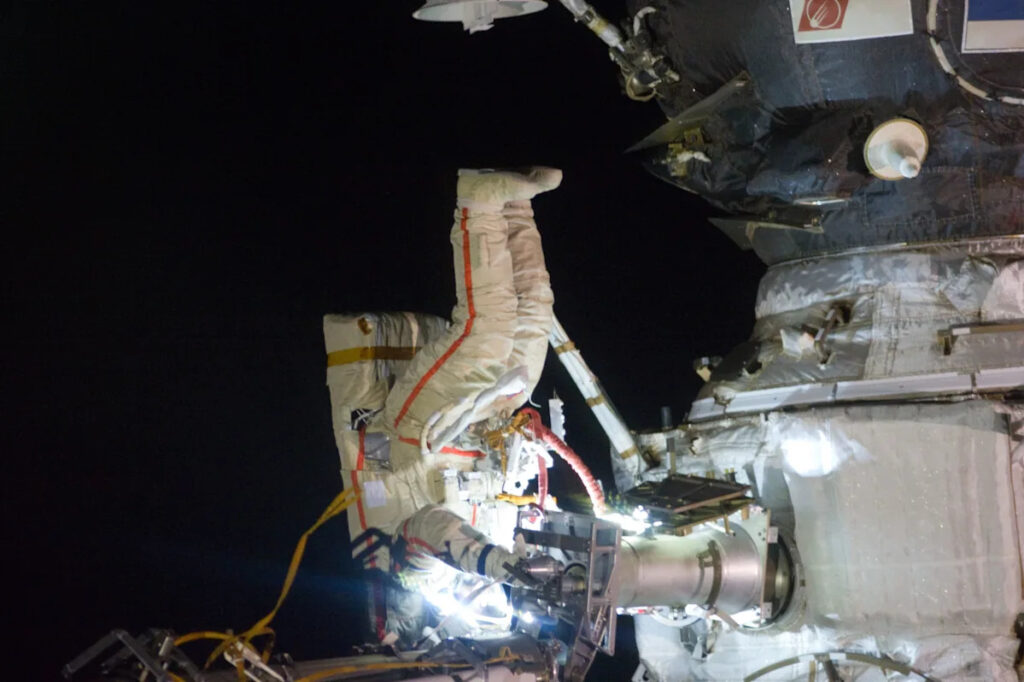
Zero gravity has long been a hallmark of space travel, offering astronauts the thrill of weightlessness. However, this unique experience comes at a significant cost. In the absence of gravity, astronauts face muscle atrophy, altered heart rates, increased blood pressure, and bone demineralization at a rate of 1% to 2% per month. For those spending extended periods on missions, such as a year aboard the International Space Station (ISS), the health implications are profound.
Exercise is a partial remedy, with astronauts on the ISS required to engage in two hours of physical activity daily. Despite these efforts, the adverse effects of zero-g environments persist. The challenges are not limited to zero-g; even the reduced gravity of the Moon or Mars poses potential health risks.
“When I landed from space I had to be carried out of the capsule and went about my first few days on Earth looking like a 90-year-old,” recounts retired astronaut Kate Rubins, who spent 300 days in space. “Many of my physiologic systems replicated somebody who’s 20 or 30 years older than me.”
Introducing Robot Pants: A Potential Game-Changer
In a groundbreaking study published in Advanced Science, a team led by Emanuele Pulvirenti from the University of Bristol’s Soft Robotics Lab has developed an innovative solution: robot pants. These garments, designed to be worn under spacesuits, aim to simulate the resistance of Earth’s gravity, thereby maintaining astronauts’ physical health during long missions.
The robot pants consist of an outer nylon layer and an inner airtight plastic layer, equipped with bubble artificial muscles (BAMs) at the knees. These BAMs can be inflated to exert pressure on the muscles, mimicking the exertion experienced under gravity. Historically, BAMs have been used to assist soldiers and individuals with disabilities, but this study positions them as a tool for continuous, low-level exertion in space.
Testing the Technology
To evaluate the effectiveness of the robot pants, Pulvirenti and his team conducted experiments at the University of Milan’s L.O.O.P. (Locomotion On Other Planets) lab, a facility operated by the European Space Agency. This lab features a harness system that simulates lunar and Martian gravity.
Six participants, with a median age of just under 31, were recruited for the study. They underwent a series of exercises on a treadmill under various conditions: without the robot pants, with the pants but BAMs uninflated, and with BAMs inflated. The exercises were conducted both under Earth’s gravity and simulated lunar gravity.
Under earthly gravity, the presence of uninflated BAMs increased metabolic activity by 18.2%, while inflation boosted it to 20.1%. In simulated lunar gravity, these figures rose to 20.1% and 29.3%, respectively.
Leg muscle activation also saw significant increases, ranging from 13.9% to 87% depending on the muscle measured.
Implications for Space and Earth
The potential applications of this technology extend beyond space travel. Pulvirenti envisions the robot pants aiding in rehabilitation on Earth, assisting those with mobility challenges or undergoing physical therapy.
“This exosuit is assistive, meaning it artificially boosts the lower-limb muscles,” Pulvirenti explains. “Our next goal is to create a hybrid suit that can switch between assistance and resistance.” Such advancements could significantly benefit individuals needing support with mobility and muscle maintenance.
Future Prospects
While human missions to the Moon and Mars may still be years away, the robot pants offer immediate benefits on Earth. The hybrid suit, capable of alternating between assistive and resistive functions, represents a promising frontier for both space exploration and medical rehabilitation.
As research continues, the integration of this technology into daily life and space missions could redefine how we approach physical health in reduced-gravity environments. The development of robot pants marks a significant step forward in ensuring the well-being of astronauts and individuals on Earth alike.






